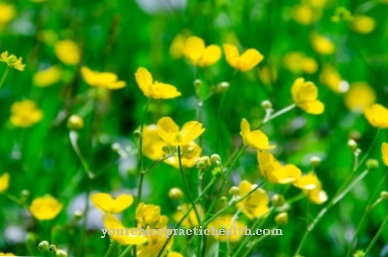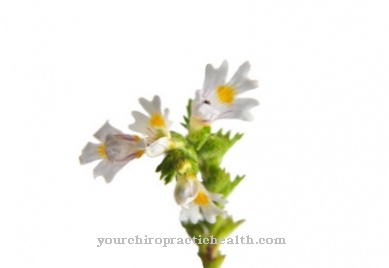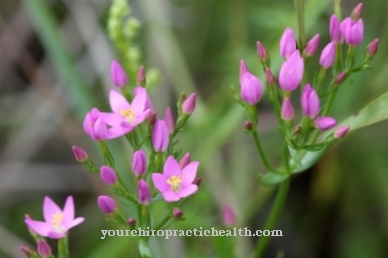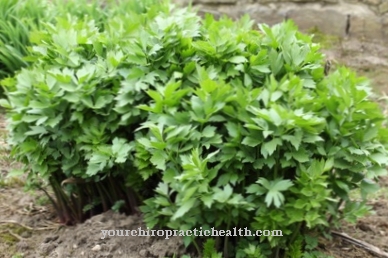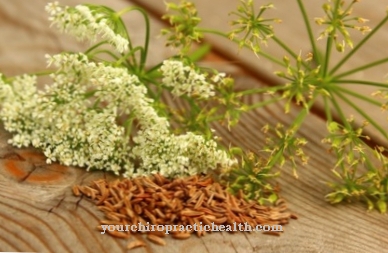Occurrence and cultivation of the broom

The winter bare rod bush can reach heights of between one and two meters. In part is Broom also summer bare and usually does not get older than twelve years. It is a deep-rooted plant with small root nodules. In addition, broom has long, dense green branches. The leaves are alternate and tripartite. In the upper parts of the branch, the leaves appear in clusters. Broom grows legumes and has a very unique flower shape.
The butterfly shape of the flowers determines the name of the subfamily. Usually the flowers are yellow and are pollinated by large bumblebees. The mechanism used for this, in which pollen is thrown out, is known as the explosion mechanism. Broom cannot pollinate itself. The pods spread as a rolled seam or over the crop of pigeons. Spread via ants is also possible. The young plants reach heights of almost one meter in the first year. They are fast growing. It is only from the fourth year onwards that growth decreases sharply.
Broom can be found on pastures, on forest fringes or in forest fields. It also grows in light oak and hornbeam forests, provided the soil is acidic.Areas in which it can be found particularly often are the Sauerland, the Rhenish Slate Mountains and the Eifel. The reason for this is the field-heather alternating economy operated there. Low-nitrogen, loamy or sandy soils are preferred. Calcareous soils hardly provide a habitat for broom.
The plant is primarily native to Western and Central Europe. A climate that is too harsh does not suit it, which is why it cannot be found in the Alps, for example. Broom can be found at heights of up to 900 meters. The plant also breaks up the soil and enriches nutrient-poor soils with nitrogen. This allows conifers to grow well in retrospect in places where broom has grown.
Broom has this property in common with other butterflies, which were formerly known as legumes. Due to the high protein content, symbioses are entered into with certain soil bacteria. This ensures the enrichment with stick material. The plant is not endangered and occurs frequently.
Effect & application
The toxicity of the plant must be assessed prior to use. Because of the alkaloids it contains and the flavone glycoside scoparin, all parts of the broom are poisonous. It contains sparteine, lupanine and hydroxylupanine. The active ingredients are toxic to both humans and some animals. Therefore, broom can only be used in very small quantities as a medicinal plant.
Symptoms of poisoning are dizziness, headache, vomiting and diarrhea. In severe cases, circulatory collapse with tachycardia can also occur. Cardiac arrhythmias, low blood pressure or hypotension can also occur. Said symptoms can occur after consuming five to ten seeds.
On the one hand, broom is used as winter fodder for deer and hares, on the other hand as an ornamental shrub. This is especially true if the flower colors differ from the standard. Different cultivated forms have, for example, pink or reddish colored butterfly flowers. In addition, due to its nodule bacteria, it is used as a soil improver.
In addition to the toxins mentioned above, broom contains biogenic amines such as dopamine and ryamin. Apart from that, the flowers contain essential oils and flavonoids such as astragaline. Due to the alkaloid content, common herb has a positive effect on health in small amounts. Both the young twigs and the flower buds are used.
Both are used in folk medicine as well as conventional medicine. Both ready-made preparations and tea mixtures can be found in the pharmacy. Broom is processed into drops, tablets or injection solutions. These can contain up to one percent of the drug. The green, dried sprouts with leaves and twigs are particularly used by the drug. Flowers and leaves are also used in medicinal products.
Importance for health, treatment & prevention
In folk medicine, broom is used especially for problems of the cardiovascular system. The herb can be taken in precisely measured amounts in the case of cardiac arrhythmias in order to balance the circulation. The excitability of the heart is reduced and symptoms such as palpitations, anxiety, dizziness and chest tightness are alleviated. It can also reduce the palpitations. The heartbeat is slowed down and stabilized.
From a folklore point of view, broom is sufficient to alleviate the symptoms in the case of mild complaints. The plant is also used against edema and as a diuretic. Edema is the term used to describe water retention in the tissue, while diuretics are diuretics. In earlier times, people used the plant to treat snakebites or to heal heart failure. The herb should also encourage labor.
Sparteine is still used today to initiate childbirth. The plant's action against snakebites is based on the immunization of sheep against viper bites. These are said to have previously eaten broom. However, no study results are available for the effects mentioned. Therefore, the intake should always be discussed with a doctor.
In addition, people who are allergic to any of the active ingredients should refrain from taking broom. The same applies to infants and children who have not yet reached the age of twelve. If symptoms of poisoning occur, a doctor must be consulted immediately.

